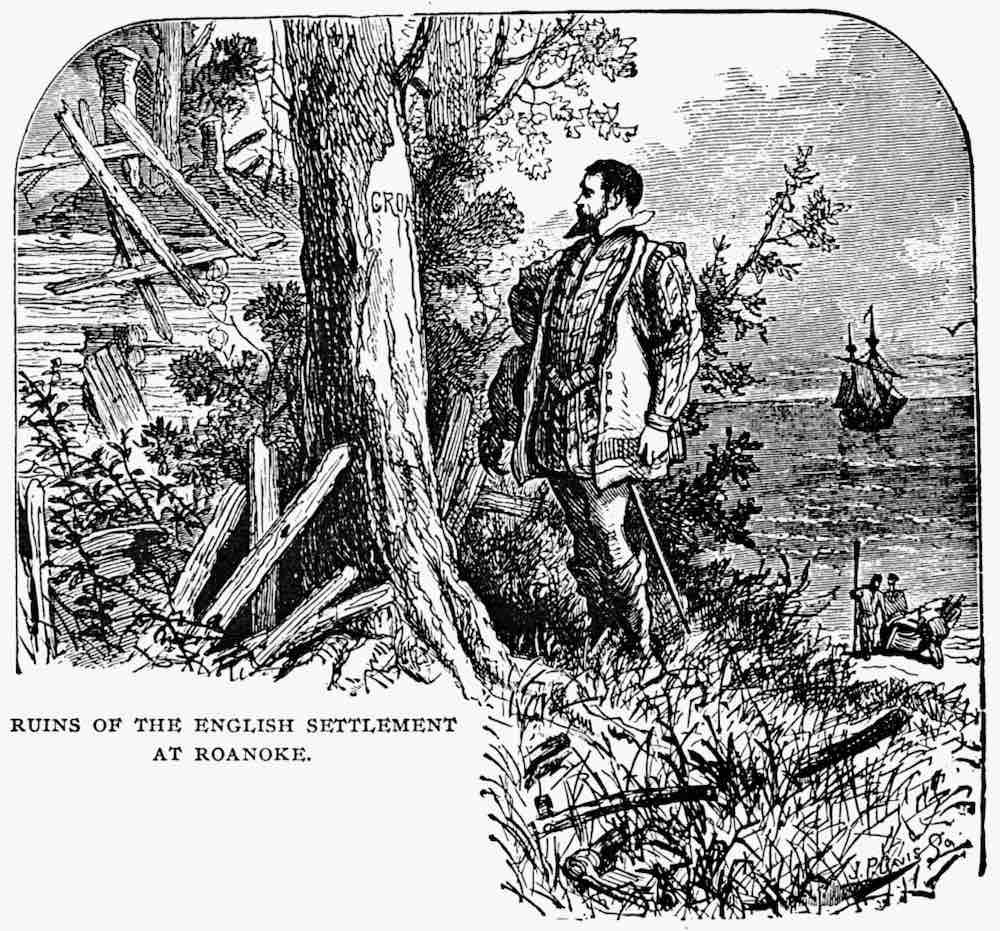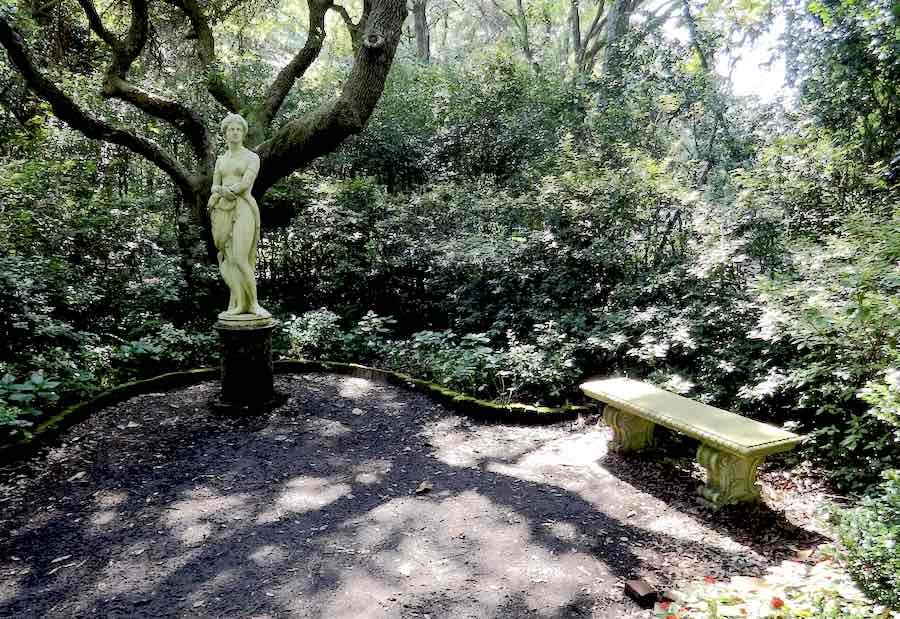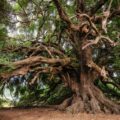In 1587, John White and a group of approximately 115 English settlers landed on Roanoke Island off the coast of present-day North Carolina. The colony they sought to establish marked the second attempt to create a long-term presence in the New World under the direction of Sir Walter Raleigh, who instructed them to establish a city bearing his name in the vicinity of the Chesapeake Bay. However, much like the earlier failed effort under Governor Ralph Lane in 1585, White and his fellow colonists soon began to face challenges that included strained relations with the region’s Indigenous inhabitants.
With hopes of garnering additional support for the colony, White sailed back to England, leaving his daughter Eleanor Dare, her husband Ananias Dare, and their infant daughter Virginia—the first English child born in America—behind on Roanoke Island. By the time he returned in 1590, following delays imposed by the Anglo-Spanish War, White found the settlement had been deserted. The only potential clues regarding the whereabouts of the colonists had been an inscription of the word “CROATOAN” carved into a palisade, along with the letters “CRO” found carved into a nearby tree, seemingly in reference to a nearby island located 50 miles to the south.
For centuries, historians have attempted to resolve the mystery of Roanoke’s famous “Lost Colony.” Theories about the fate of the colonists range from their assimilation with local Indigenous tribes to their possible death resulting from attacks by them. Others have proposed that the colonists may have died in a failed attempt to return to England or even that their fate may have been linked to the arrival of the Spanish prior to White’s return in 1590.
For White, the inscriptions left at the deserted colony were clear evidence of the colonists’ relocation to Croatoan Island. An agreement had been made that in the event of their departure, they would leave behind a “secret token” indicating their whereabouts, or if they were imperiled, they would instead leave a cross pattée indicating such circumstances.


While the true fate of the settlers remains one of history’s great unsolved mysteries, recent evidence uncovered by archaeologists is bringing researchers closer than ever to a definitive answer about what happened to the 16th-century colonists.
Recent excavations by the First Colony Foundation, a North Carolina 501(c)(3) non-profit organization formed in 2004, have reportedly unearthed evidence of a farmstead near the Elizabethan Gardens in Manteo. The farmstead is believed to be associated with the Indigenous Algonquian village of Roanoke.
Last summer, remnants of Algonquian pottery from the 1500s, along with a copper wire earring believed to have been made from drawn copper brought from England, point to possible contact between the local tribes and English settlers.
Dr. Eric Klingelhofer, Vice President of Research at The First Colony Foundation, said that the discovery of pottery alongside the copper earring, which was likely worn by an Indigenous warrior, could be a veritable smoking gun in the search for answers to the fate of the Lost Colony.


“Finding domestic pottery—the type used for cooking—in close proximity to an apparent piece of Native American jewelry strongly confirms we are digging in the midst of a settlement,” Klingelhofer said in a news release that appeared on the non-profit organization’s website.
“The copper ring indicates contact with the English,” Klingelhofer says.
Earlier this year, in March, further excavations at the site revealed the presence of charcoal, along with additional evidence of Algonquian pottery, which Klingelhofer and the First Colony Foundation believe supports the theory that Roanoke was a palisaded village, where warriors resided within the walls, while working-class families lived nearby on farmsteads.
Klingelhofer says the artifacts unearthed during excavations over the last year are important but emphasizes that “it’s their relationship to different soils which are evidence of links to the past, and together that’s what tells the story.”
Altogether, the recent findings are helping to provide what may prove to be potentially crucial information on the interactions between English settlers and Indigenous groups along North Carolina’s Outer Banks during the late 16th century, which could help assemble the missing pieces of the Lost Colony puzzle and, ultimately, resolve the question of whether the colonists integrated with Indigenous communities.
The new evidence also supports the idea that Roanoke was a site of significance at the time and likely served as a tribal seat for a local chief who presided over the areas of modern-day Dare County, Roanoke Island, and parts of the mainland.
The First Colony Foundation says it is planning additional explorations at Fort Raleigh National Historic Site, which could lead to additional evidence that may help determine what became of the first settlers and their fate. Additional information about the First Colony Foundation can be found on its official website.
Micah Hanks is the Editor-in-Chief and Co-Founder of The Debrief. He can be reached by email at micah@thedebrief.org. Follow his work at micahhanks.com and on X: @MicahHanks.

